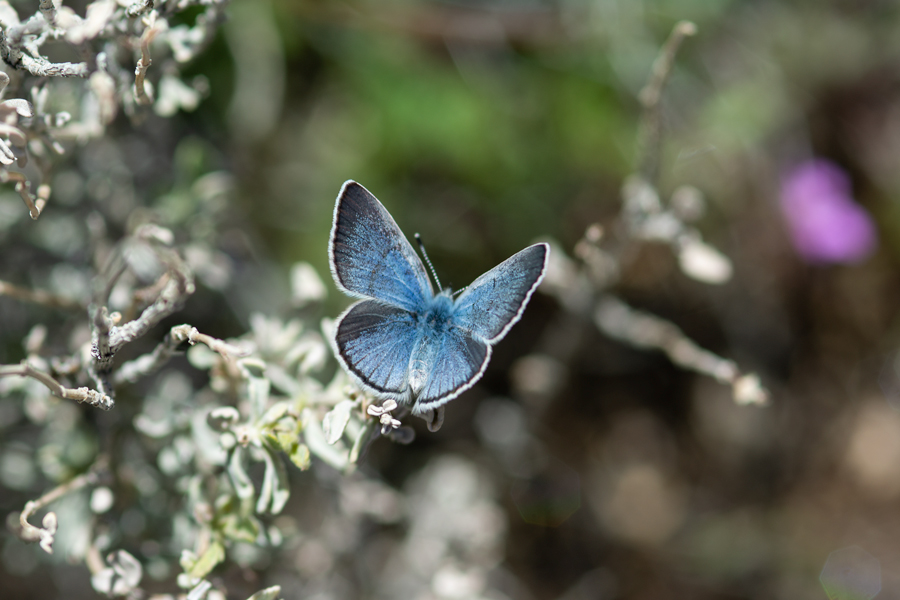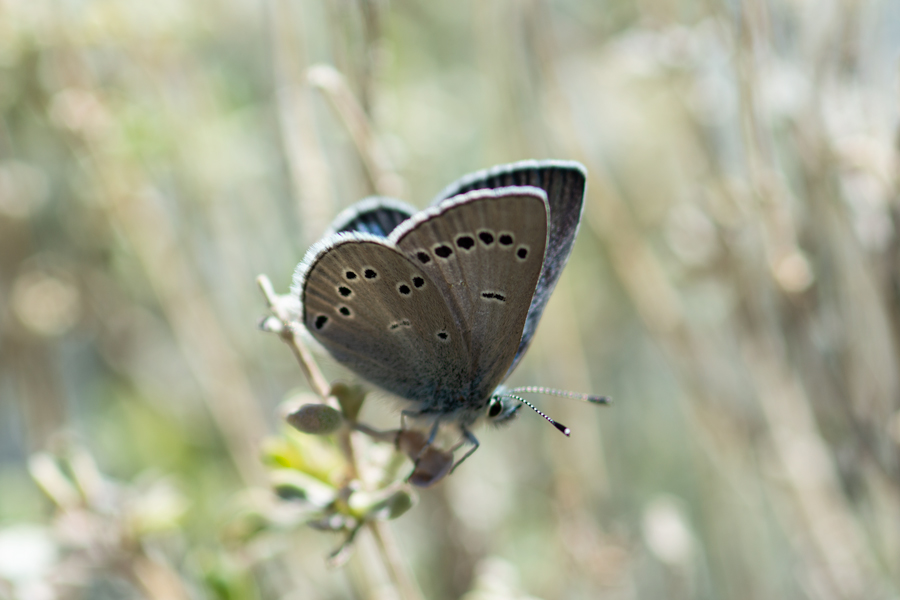Glaucopsyche lygdamus deserticola
Silvery Blue (E. Mojave Desert population)
This population was mentioned in the Emmels' 1973 book, The Butterflies of Southern California, as an unnamed group found sparingly in the Providence, New York, Clark, and Kingston ranges of the eastern Mojave Desert. In the late 1970s and 1980s, George T. Austin and others collected hundreds of this butterfly along Cottonwood Springs Road, from 0.6 to 1.8 miles south of highway 160 in Nevada north of the town of Goodsprings (southwest of Las Vegas). Subspecies deserticola was then named in the 1998 Systematics of Western North American Butterflies by Austin and John Emmel (pp. 509-510). Comparing them to surrounding populations of G. lygdamus, they concluded, "thus, G. l. deserticola is distinguished by a combination of large size, relatively broad dark margins, large ventral spots (these placed distally) and relatively dark females."
According to the Emmels, caterpillars feed on the buds, then the flowers, and lastly seeds within the pods, of "an unidentified Astragalus species". It then overwinters as a pupa, with adults emerging usually in early April and flying into May. The Astragalus species at the Cottonwood Pass Road type locality (where I found many flying on April 22, 2020) was identified as lentiginosus var. fremontii, which is also found in the eastern Mojave of California. This plant appears to be fairly common in the mountains of the Mojave Preserve, the butterfly perhaps less so.

